Taking a break.
Kayaking with cannibals
From the Winter 2010 issue of Wavelength Magazine. Read the entire magazine online.
By Dave Cauldwell
I don’t like the way Raba’s smiling at me. He looks mischievous, what with his red lips, orange betel nut–stained teeth and a twinkle in his eye.
“Just stand there,” he says.
I’m underneath a tree whose leaves are drooping under the midday sun. Next to me, propped up against the trunk, is a woman with a rock in her hand smashing nuts out of their shells. In front of us children play in the sea; one boy catches waves using an off-cut of polystyrene as a body-board.
Shouting brings my gaze forward. A man races from one of the leafhouses that skirt the shore. His face and chest are covered in black paint, and he charges towards me with a club in his hand, stopping just short.
‘I want to kill this man!’ he shrieks. The whites of his eyes are prominent against milk chocolate skin.
One by one, four axe-wielding men appear from the jungle and take it in turns to lunge at me, pulling back only at the last moment. Skulls are crudely etched onto their shields.
The spokesman shrieks again. “Who send this man to our village?”
I pause. “Er, Wavelength”’
“We want to eat this man!”
 Clearly they don’t have subscriptions.
Clearly they don’t have subscriptions.
Before axes cleave open my flesh, a man wearing a wig woven from coconut straw enters the fray. He carries a large bow and arrow and holds off the warriors. It’s the chief and thankfully he’s on my side. Holding a clam shell aloft, he barters with the warriors to spare my life. They demand a bigger shell so the chief gives it to them (these things may look like a giant polo mints, but they’re actually currency around here). Eventually the men disband and I’m left with all limbs intact.
“This is traditional welcome,” says Raba.
“I’d hate to see them when they’re angry,” I reply.
Although this performance was somewhat contrived, it was what awaited explorers who bravely charted Marovo Lagoon, the world’s largest saltwater lagoon, back in the early 1900s. This was when missionaries sailed into Solomon Islands’ waters, their sails billowing with religion, in an effort to spread Christianity and stop the “barbaric” practice of headhunting. Before the widespread acceptance of this religion, there’s no way the chief would have dug into his clam stash to save a white man; rather, he would’ve been carving into him with a large knife. Oddly enough, some of the missionaries actually wanted to end up as main courses, believing they would die as martyrs and thus gain a quicker passage to heaven.
If the missionaries had looked at Marovo Lagoon, they might have realized heaven was already in sight. Its crystalline waters teem with sharks, manta rays and fluorescent fish. Rainbow-colored reefs form ethereal underwater worlds, while secluded white beaches make what’s above the surface just as magical. The main mode of transport here is kayak or canoe. And for most of my seven-day sojourn with Raba, I traveled by kayak to explore the mysterious backwaters of paradise, and to uncover the area’s grisly headhunting past.
My journey began from an island shaped like a hammerhead shark arching its back. Uepi Island is a hub for adventure seekers and the best place in Marovo from which to embark on a guided kayaking expedition. And paddling is the best way to explore this vast aquatic playground.
It’s not long before Raba has forged ahead. We’ve been dropped off in the Mbili Passage, a forty-five minute boat ride from Uepi. Once the passage ends, we’re paddling in open sea. Water undulates beneath my kayak and Raba disappears intermittently between troughs of swell. He takes three leisurely strokes to my ten, before resting to soak up the view. I’m just getting soaked, mistiming my strokes and not making much headway. Although there’s no real danger of capsizing, my stomach turns over.
Raba gestures to an outcrop, pointing his paddle at a distant roof almost camouflaged by jungle. I can’t be sure whether this is the eco-lodge we’re staying at tonight, but it’s a long way off.
When we finally reach the shore, a breeze caresses my face and ruffles the leaves of coconut palms. The eco-lodge at Ropiko is run by Barry, a sixty-eight-year-old English expat who’s married Jenna, a local girl thirty-five years his junior.
White coral paths snake into the bush between papaya trees, and there’s the wreck of a Japanese war plane that was gunned down during WW2. It’s now a glorified plant-pot for Barry’s orchids.
After an evening listening to Barry’s hilarious stories about things such as excrement-eating fish (stay away from the bright blue ones), we take a boat to the custom village of Mbiche for my traditional ‘welcome’. From here it’s a rugged 15-km walk back to Ropiko, and then a three-hour paddle to Kajoro where I’m meeting John Wayne – not the bowlegged gunslinger, but a descendent of a notorious headhunter, Kanijomo. This was a man who lived to kill until missionaries persuaded him to trade his axe for a bible.
In what seems like a biblical moment, the heavy rain which has been tumbling all night and morning suddenly parts and I’m under the sun’s scorching spotlight. The wind has also changed direction and I’m paddling into it.
Rounding a point, a rickety stilt house appears on the shore. Mangroves poke out of the water, crooked fingers which beckon the sun’s rays into the lagoon. Underneath a sheet of aquamarine they wriggle like golden eels before being swallowed into the murky depths.
A man with sunshine in his eyes stands on the shore. John Wayne helps us haul our kayaks out of the water, and we sit on the veranda with buzzing mosquitoes overlooking the lagoon.
“The spirit always gains strength from chopping heads,” John tells me as rain pitter-patters on the roof. Although it’s only mid-afternoon it’s dark, the only light coming from a gold-tinged horizon.
“Kanijomo could only sleep for an hour at night,” says John. “He was always thinking about killing.”
He shows me a picture of his great, great grandfather that was taken in 1920. In it he wields an axe and wears clam shells like Mr. T wears bling. There’s a psychotic smirk on his face.
Headhunting was actually a very spiritual (and highly superstitious) practice. Skulls were gathered for their mana, or energy, stored inside them. It was this energy, headhunters believed, that warded off evil spirits and brought prosperity to the village.
When Kanijomo and his band of warriors arrived in an enemy village one day, they were greeted with a banquet instead of a battle. Missionaries had already converted the villagers to Christianity, and in the face of religion Kanijomo realized his jugular-craving spirit was powerless. Although he was ready to hang up his axe, the headhunting spirits inside his head weren’t so keen.
“At night they banged on the roof and doors of his house,” John tells me, “demanding that he cut more heads. They haunted him for two months before finally leaving.”
Raba and I leave the next morning. The lagoon is a sheet of glass reflecting dappled clouds. Children in bright purple uniforms canoe to school and the water massages our kayaks as we drift to the sound of schoolchildren singing in assembly. As one song fades behind us, angelic voices from another school up ahead resume the chorus, their dulcet tones rippling across the lagoon like a siren’s serenade.
I ask Raba if he likes music.
“Boyzone,” he replies, chewing a betel nut.
Before my brain has chance to override my vocal cords, I’m singing Love me for a Reason (the Cat Stevens version, obviously).
Raba nods in approval, spitting out a jet of red saliva. His lips and tongue are blood red and he looks like he’s just bitten the head off a chicken.
Behind us, John Wayne’s lodge fades into the haze of an approaching storm. The lagoon opens up and gets choppy, and the current comes at us from the side. Eventually the storm catches up and rain cascades, pinpricking the surface of the lagoon. In seconds I’m drenched, ample punishment for my woeful singing.
“I stole my wife,” says Morgan, a friendly local with bleached blonde hair who helps Raba and I beach our kayaks at Olovotu Point, a two-and-a-half hour paddle from John Wayne’s. In Malaita, one of nine provinces in the Solomons, where Morgan met his wife, it’s custom for grooms to pay a bride price to the daughter’s family.
“Some people pay SD$100,000 (roughly AU$16,667),” he says as we make our way to a sacred site where the skulls of three great warriors are kept. ‘Then they have to buy land, a boat and other things on top of that. My wife and I ran away. For two years her family didn’t know where she was. Eventually I wrote them a letter and they came here. I paid them SD$3,000 (AU$500) and off they went.’
We stand before a mass grave cluttered with bones. Morgan reaches in and pulls out the bottom half of someone’s jawbone. Ten teeth remain, amazing considering they’re over seventy years old.
“These are chief’s skulls,” he says. In headhunting days these would have been displayed in special A-frame houses along the shore, a warning for passing tribes to stay away.
The sky rumbles and within moments rain falls in a torrent. We run for shelter, sitting underneath a leaky roof. As Morgan bounces his one-year-old son on his lap, I find it hard to believe that his ancestors used to eat babies. On each headhunting raid, after slaughtering an entire village, warriors kidnapped babies or young boys, known as veala. They were imprisoned and fattened up. On the eve of the next headhunting mission, the veala was sacrificed and taken to a special stone where it was gutted alive. Before this happened, the unfortunate child was tossed from warrior to warrior to make the meat more tender for the chief.
We’re in the kayaks again and a blanket of low-lying cloud lingers over tree-clad hills. “This area is being logged,” says Aerum, pointing just below the clouds. “Asian companies offer landowners big bundles of cash. They don’t think about the future and in the end they only end up with a small amount and ruined land.” Most of the money goes to the people who broker the deals.
By now the lagoon is like a lacquered surface, and in the distance is a small island, Matikuri, on which sits an eco-lodge, the place where we’re staying tonight. This is a good location from which to access the Bapita Passage, a narrow system of waterways and a great place to kayak.
Bapita immediately swallows you into its mangrove belly; the smell here is pungent: I imagine this is what it must have smelt like back in headhunting times, when freshly severed heads were left for a month or two to decompose. Once the skin was eaten away or peeling off, the brains were emptied and the skulls buried.
On entering the passage, the water turns into a sheet of shimmering emerald. Stripy fish dart past my paddle as we approach an isolated village. Fishermen are out in numbers catching food for tomorrow’s Sabbath feast. A teenage girl sings in one of the huts and for a fleeting moment our eyes meet. They twinkle with longing, and as I paddle past she sings louder. Eventually her voice is lost to the mangroves, replaced by a strange birdcall that hoots like an owl before sounding like it’s coughing up phlegm.
We pass underneath a logging bridge. The Australian navy bombed this part of Bapita to create a shortcut through the passage. This meant locals no longer had to haul their canoes over mudflats.
The passage opens out and cliffs of mauve, grey and gold curve over my head, along with overhanging trees. Beneath our kayaks is a sinkhole where divers can descend 28 meters before a horizontal cave traverses 20 meters horizontally. There the ceiling ends and the cave widens into a canyon which holds the remains of a battered American barge.
Another good diving spot near Matikuri (roughly a two-hour paddle) is Hele Bar. Here, on the edge of a reef that plummets 40 meters, lies another wreck: that of a 35-meter Japanese tuna fishing boat, Taiyo, which ran aground on its maiden voyage. The captain was drunk and decided to take a shortcut instead of sailing around the passage. A failed salvage operation has rendered the Taiyo completely vertical.
Near this wreck is a small island, and by the time Aerum and I reach it my sunburned hands feel like they’re covered with hot embers.
Aerum points vaguely to where the wreck should be, and I wade in with my snorkel. The path to the edge of the reef is convoluted: the water is shallow and if I try to swim over the needle coral I’ll end up scraping the skin off my stomach. Instead I follow a series of troughs until the reef ends and murky blue water stretches ominously in front of me.
A big wave surges in and I’m thrown onto the coral. I cut my hand and blood spirals. Sharks swim around inside my head. Mildly panicked, I try to get away from the reef, but another wave pushes me into a piece of coral that resembles a giant brain. This time I cut my knees and feet. Sea urchin spikes are inches away from puncturing my stomach and giant clams look as if they’re mouthing ‘Go back’. I abort my mission and swim ashore before I make a wreck of myself.
‘You didn’t see it,’ says Aerum as I stumble ashore.
‘Never mind,’ he says, taking my snorkel off me. ‘There are some things you don’t need to see.’
That’s true, but the Marovo Lagoon isn’t one of them.
Dave is a Melbourne-based freelance writer whose work has appeared in a variety of travel magazines Down Under. He is currently writing a travel memoir about Australasian fringe dwellers, part of which will feature his Solomon sojourn.

For more information:
• To embark on a Marovo adventure, log onto kayaksolomons.com. All kayak trips start from Uepi Island and the resort owners have excellent knowledge of the area and can organize varied itineraries. They can also arrange boat transfers (at an additional cost) between kayaking sites.

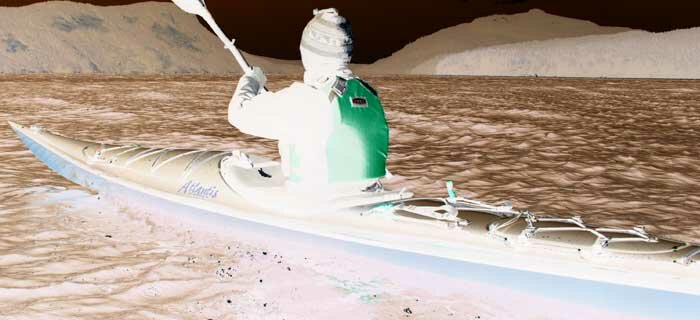
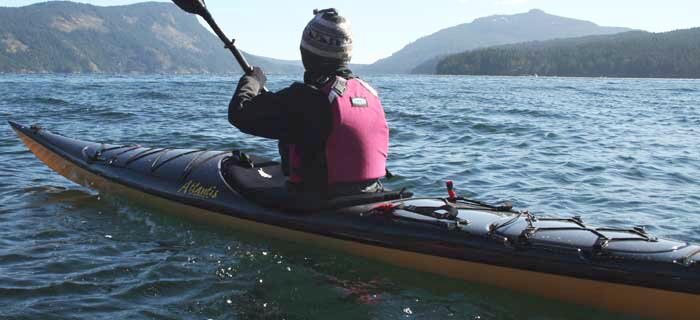
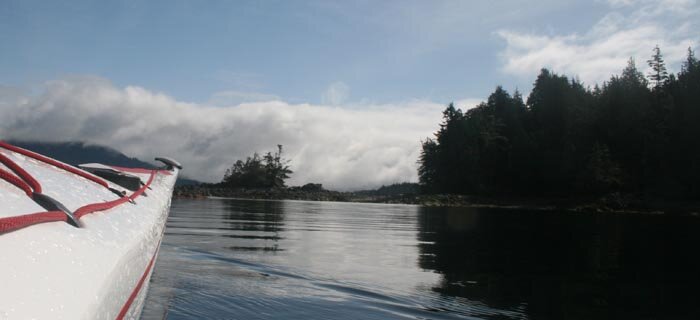
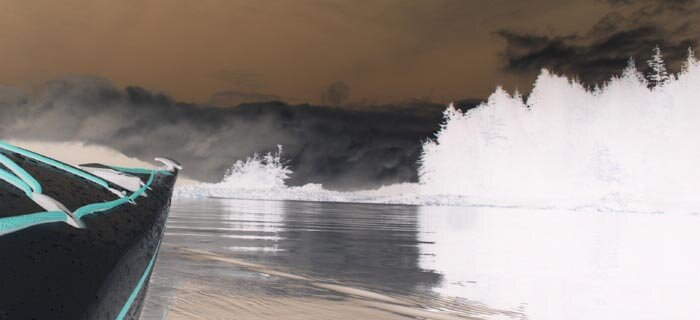
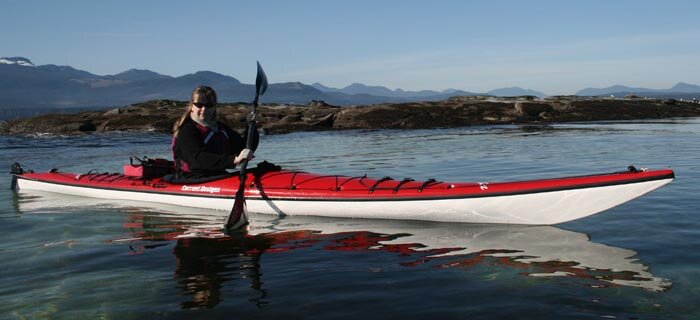



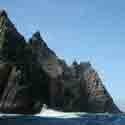













 This site uses valid HTML, CSS and Flash. All content Copyright © 2010 Wild Coast Publishing.
This site uses valid HTML, CSS and Flash. All content Copyright © 2010 Wild Coast Publishing.